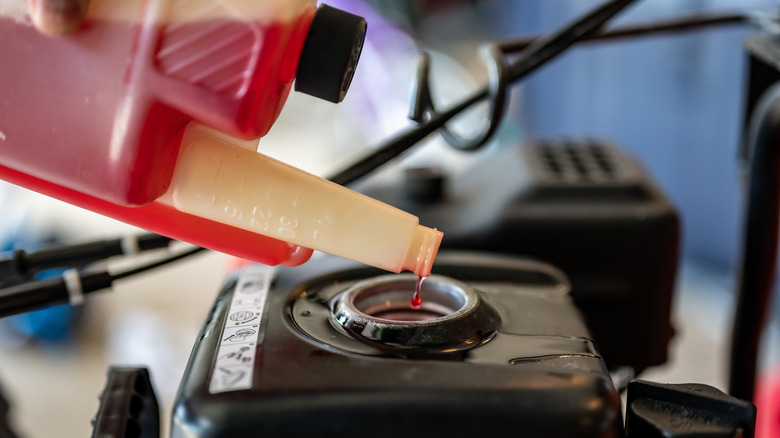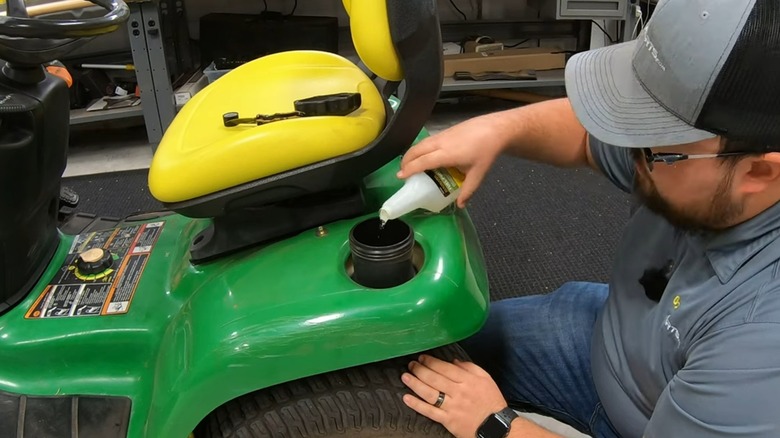Prepare Your Gas-Powered Equipment For Winter With One Simple Addition To The Tank
The cold weather has swooped in, which means there's lots of preparation to be done. Home winterizing, shoveling or snow blowing, and, if possible, parking your vehicle in a garage are all essentials this time of year to combat dropping temperatures and snowfall. What some might not realize is that this also calls for the preparation of gas-powered appliances, ranging from string trimmers to blowers to lawn mowers. These won't be used for several months, yet they'll have to sit in the cold during storage and could be damaged by it. With the addition of one substance to their gas tanks, though, they'll fare far better.
When it comes to gas-powered appliances, their fuel source is prone to degradation without consistent use. Gasoline is capable of becoming more solid and gelatinous, gumming up the inner workings of your equipment. That's where you can benefit greatly from a fuel stabilizer: an additive that prevents this breakdown of gas during long-term storage. Fuel stabilizer keeps fuel fresh throughout the off-season, ensuring that not only will it not go on to damage the internals of your equipment, but it will also help your equipment power up even easier once the weather warms up and it's needed again. Fuel stabilizer is an essential element of winterizing your motorcycle for cold-weather storage, too. All in all, adding a fuel stabilizer is a simple way to keep your equipment running for the long haul. With that said, there is some nuance to choosing and using this additive that you should be aware of.
Selecting the right fuel stabilizer and using it right
For the most part, it's pretty simple to select the right fuel stabilizer for your needs. The biggest distinction to make is which type of fuel your equipment uses, gas or diesel, and matching that to your stabilizer. You also should keep in mind how long the appliance or appliances in question need to be stored. Typically, a fuel stabilizer is a safe bet for around 24 months, but any longer than this means draining your equipment of fuel completely. Once you figure out which stabilizer is right for you and your needs, next comes the matter of adding it to your appliances the right way.
The first thing to do is determine how big the fuel tank attached to your equipment is. This will correlate with the manufacturer's recommended stabilizer amount to pour in. With that in mind, you want to fill up on gas and add the recommended amount of stabilizer. The next step is to put the gas cap back on and fire up your equipment, allowing it to run for a few minutes. This step is crucial, as it distributes the stabilizer throughout the system to provide evenly distributed protection. Once this is done, the equipment can be packed away as you normally would for the season, and you can rest assured you've done your part to keep everything in the best shape possible.
Just as cold weather can kill DeWalt batteries and lithium-ion units from other companies, it can do a number on the fuel within your equipment and, in turn, do some damage. That's why it's important to toss in some fuel stabilizer as temperatures drop, which will help keep your spring cleaning efforts as stress-free as possible.

